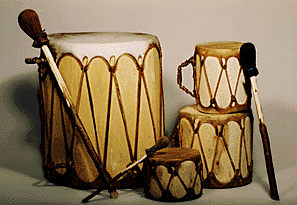Each year, our wonderful colleague Rabbi Phyllis Sommer, puts forth a daily theme for the Jewish month of Elul – the four weeks leading up to Rosh Hashanah. There are many others who are participating in #BlogElul with quotes, images, and thought pieces. It is wonderful to read multiple interpretations of the daily theme by different writers on their blogs and via their tweets.
This year, I will also be blogging through Elul, but I’m going to be departing from the common themes of the #BlogElul project. It is a little chutzpadik on my part, but I’ll be continuing to label my postings with the #BlogElul moniker to connect with the larger community who is engaged in reflection during this preparatory month. Traveling with my own congregation, connecting with community, and specifically relationship-building between congregants, is our larger theme for this coming High Holyday season and beyond.
I’ll explain more in a just a moment. But first, I invite you to take a few minutes to watch this wonderful, heart-warming video to set the scene:
And here are some excerpts from the message I shared with my congregation on the 1st day of Elul, to launch our own ‘Take a Seat, Make a Friend’ experience over the coming 7 weeks and beyond:
Four people, sitting in kayaks in the middle of a lake, strike up a conversation. It is not a hypothetical – it is what happened when two of the families who came to our Summer picnic at Hopkinton State Park just a few weeks ago met. They discovered that they have a great deal in common. Lesley and David learned that they’d grown up in the same town, and even belonged to the same temple. David and Jim learned that they used to work at the same company, and David has done business with Jim’s new boss. Jim and Lori discovered that they were both Industrial Engineers by training. But, as Lesley put it, more than the specifics, it was the overall sense of connection that was important – it created a warmth in their hearts and a feeling of being ‘home’. Just as our teens speak about Chai School being a place where a sense of common identity is felt by how friends just ‘get each other’, so that sense of connection is something that we all deeply hope to find in community.
This is what happens when you take a seat and begin to talk. It can happen on a kayak, in a ball pit, at a coffee table, at an Oneg, and anywhere that two people begin a conversation that scratches beneath the surface.
We all yearn for that kind of connection. And we want Congregation B’nai Shalom to be the kind of community where you can find it. This year we will be especially focusing our energies on creating the kind of gatherings and opportunities that will enable more of us to have those meaningful conversations and deepen relationships among the members of our congregation.
There will be many opportunities to experience this during the High Holyday season. However, there is no time to start like the present. While the core work of relationship building happens in face-to-face interaction, the next four weeks – the Jewish month of Elul – is traditionally a time of preparation. During this month, I will be posting inspirational quotes and videos on themes of connection and relationship, along with questions on our Facebook page (‘like’ the page to receive the feed on your wall). If you are not a Facebook user, you will find the same reflections on my blog (where you can also sign up to receive new postings in your email inbox). I invite you to engage, comment, and share when you can. Our online sharing and interactions with each other’s comments will enable us all to get to know each other a little more. If you prefer, you can choose to share anonymously on the blog and, if you wish to do so on Facebook, send me your comment and we will post as ‘CBS’ with your thoughts.
In addition, I am inviting congregants to contemplate some of the questions below and send me short responses in the coming weeks. I will weave these responses into our High Holyday services this year and, in this way, we will co-create our liturgy together, getting to know each other a little more deeply in the process.
- Share something on your bucket list? Why this?
- Who or what inspires you?
- What is one experience that changed your life?
- What keeps you up at night?
- What do you have faith in?
- What is most precious to you?
- Who do you miss? How did they impact your life?
So… let the conversations begin.









